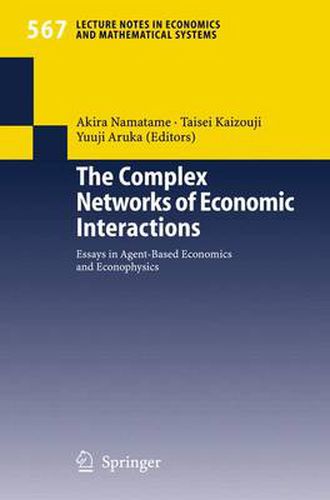Readings Newsletter
Become a Readings Member to make your shopping experience even easier.
Sign in or sign up for free!
You’re not far away from qualifying for FREE standard shipping within Australia
You’ve qualified for FREE standard shipping within Australia
The cart is loading…






This title is printed to order. This book may have been self-published. If so, we cannot guarantee the quality of the content. In the main most books will have gone through the editing process however some may not. We therefore suggest that you be aware of this before ordering this book. If in doubt check either the author or publisher’s details as we are unable to accept any returns unless they are faulty. Please contact us if you have any questions.
Understanding the mechanism of a socio-economic system requires more than an understanding of the individuals that comprise the system. It also requires understanding how individuals interact with each other, and how the agg- gated outcome can be more than the sum of individual behaviors. This book contains the papers fostering the formation of an active multi-disciplinary community on socio-economic systems with the exciting new ?elds of age- based modeling and econophysics. We especially intend to increase the awareness of researchers in many ?elds with sharing the common view many economic and social activities as collectives of a large-scale heterogeneous and interacting agents. Economists seek to understand not only how individuals behave but also how the interaction of many individuals leads to complex outcomes. Age- based modeling is a method for studying socio-economic systems exhibiting the following two properties: (1) the system is composed of interacting agents, and (2) the system exhibits emergent properties, that is, properties arising from the interactions of the agents that cannot be deduced simply by agg- gating the properties of the system’s components. When the interaction of the agents is contingent on past experience, and especially when the agents continually adapt to that experience, mathematical analysis is typically very limited in its ability to derive the outcome.
$9.00 standard shipping within Australia
FREE standard shipping within Australia for orders over $100.00
Express & International shipping calculated at checkout
This title is printed to order. This book may have been self-published. If so, we cannot guarantee the quality of the content. In the main most books will have gone through the editing process however some may not. We therefore suggest that you be aware of this before ordering this book. If in doubt check either the author or publisher’s details as we are unable to accept any returns unless they are faulty. Please contact us if you have any questions.
Understanding the mechanism of a socio-economic system requires more than an understanding of the individuals that comprise the system. It also requires understanding how individuals interact with each other, and how the agg- gated outcome can be more than the sum of individual behaviors. This book contains the papers fostering the formation of an active multi-disciplinary community on socio-economic systems with the exciting new ?elds of age- based modeling and econophysics. We especially intend to increase the awareness of researchers in many ?elds with sharing the common view many economic and social activities as collectives of a large-scale heterogeneous and interacting agents. Economists seek to understand not only how individuals behave but also how the interaction of many individuals leads to complex outcomes. Age- based modeling is a method for studying socio-economic systems exhibiting the following two properties: (1) the system is composed of interacting agents, and (2) the system exhibits emergent properties, that is, properties arising from the interactions of the agents that cannot be deduced simply by agg- gating the properties of the system’s components. When the interaction of the agents is contingent on past experience, and especially when the agents continually adapt to that experience, mathematical analysis is typically very limited in its ability to derive the outcome.